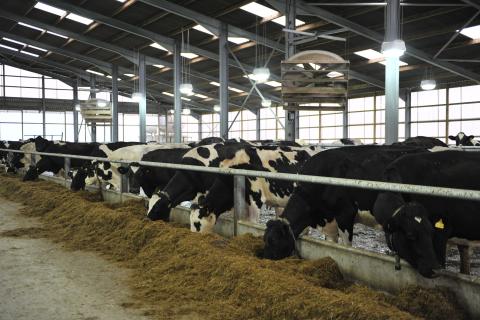Embracing innovation can help Welsh farming and forestry stay ahead of competitors and operate profitably. The new look Farming Connect Programme will focus on innovations and new technologies for farmers and foresters, making it easier to keep up to speed with advancements.
Most Welsh farm and forestry businesses can find it challenging and time consuming to keep fully abreast of new technologies and will be seeking confirmation of potential benefits before deciding to invest money and time. Farming Connect recognises this, and will be working to highlight new technologies that are very near to being commercially viable in Wales, making it easier and quicker for business owners to come to a decision.
Innovative farming technology is allowing one Welsh dairy farm to increase herd performance, pushing milk production to an average of 9,000 litres a cow per lactation.
John and Mair Allison run a 246-cow Holstein Friesian herd at Sychpant Farm, near Cardigan, with their son, Marc, and his fiancé, Lucy. Their eldest son, Tom, is a dairy engineer and consultant specialising in innovation for farms and rural businesses.
Tom, a past member of the Farming Connect Agri Academy, has been instrumental in driving the use of new technologies at Sychpant Farm.
A newly constructed state of the art cubicle shed is a case in point. It features induction lighting, polycarbonate cladding and controlled ventilation delivered by large louvered fans which prevent heat-related stress as well as reducing humidity and improving air quality.
The family had originally intended to construct a naturally ventilated barn but, because the farm is on an exposed site, rain would have penetrated the entire south and west facing sides during wet and windy conditions.
“We thought about a curtain or louvers to protect these sides but realised that this would compromise the natural ventilation as there would be nowhere for clean air to be drawn in if the sides were shut,’’ Tom explains. “By totally enclosing the building we could ensure that we got the ventilation right every day.’’
The building also offers some inherent bio-security, including starling resistance, as the doors are kept closed and the air intake is meshed.
“If Marc chooses to keep the herd housed in the summer, the system will generate a wind speed that is hostile to flies and midges thereby contributing to improved welfare and comfort,’’ says Tom.
“We were open to the concept of mechanical ventilation and after a trip to the United States of America decided to go for it.’’
The technology in the new building cost around £65,000 and includes 10 fans, a long day lighting and moon lighting system, an air intake curtain system, polycarbonate side cladding and a computer controlled system that includes temperature, humidity and static pressure sensors. There is also a facility to record water usage and power consumption and the manure level in the lagoon.
Tom is confident the technology will pay for itself within two years through higher milk output, improved fertility and better herd health. “We have seen yields increase since the cows have been in the new building because it is a good environment for them,’’ he says.
Technology is also driving other areas of the business. Sensors in the milking parlour monitor vacuum levels and cows are fitted with collars to monitor rumination and activity which advise of optimal service timing.
Boluses monitor cow temperature, issuing an alert typically 60 hours before a cow displays clinical symptoms of illness. “By intervening before cows display physical signs of being sick we are able to take measures that can reduce the need for antibiotics and the withholding of milk and even prevent mastitis that affects production over a lifetime,’’ Tom explains.
Even the materials used on the farm are selected on their performance value. The water troughs in the new shed are made of stainless steel instead of the usual galvanised steel. “If we ate yogurt from a galvanised metal spoon it wouldn’t taste nice and I believe it is no different for a cow drinking water from a galvanised trough on a farm where water quality is mostly going to be acidic,’’ says Tom. “Stainless steel helps ensure the water is "more palatable and ensures the cows drink more.’’
Although Sychpant is representative of a Welsh family-run dairy farm, the level of technology it utilises is anything but typical.
Dewi Hughes, of Menter a Busnes, which delivers the Farming Connect programme on behalf of the Welsh Government, says there are many new technologies available to farmers and foresters but the aim is to identify the ones that help businesses become more efficient, improve quality standards and better target inputs.

